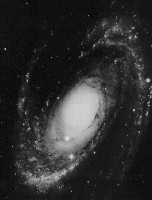 |
| Galaxy M81 [G. Bothun] |
Spiral galaxies, like irregulars, are sites of ongoing star-formation and therefore contain lots of young stars. They have a disk, formed of both stars and gas, surrounding a central bulge which is rather similar to an elliptical galaxy (just smaller). Waves propagating through the disk form the spiral arms that we see, and cause the gas clouds to collapse and form new stars. Because the spiral arms are regions of active star formation they contain many hot young blue and blue-white stars, making them extremely visible. The disk is thus rich in young stars. The bulge of a spiral galaxy is typically much more red in color, resembling elliptical galaxies; this indicates the presence of many old stars in the nucleus.
This sequence shows a galaxy changing its appearance from spiral to almost elliptical as the observed wavelength is varied from blue to red (infrared) light. The hot young stars are found predominantly in the spiral arms of the disk, while the cooler red star dominate the bulge. As we run through the different stellar populations, the appearance of the entire galaxy changes drastically.
 |
| Galaxy M81 [G. Bothun] |
Spiral galaxies are rich in gas and dust, which is often visible as lanes of dust when viewed from the "top" or "bottom", and as layers of dust when viewed from the side. In our own Milky Way the center of the galaxy is invisible from our vantage point because the interstellar dust between us and the center is so thick (forming the zone of avoidance).
| NGC 3184 | NGC 1365 | M100 | NGC 6782 |
 |
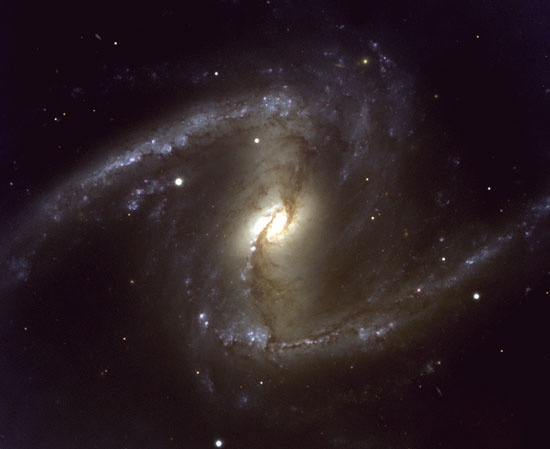 |
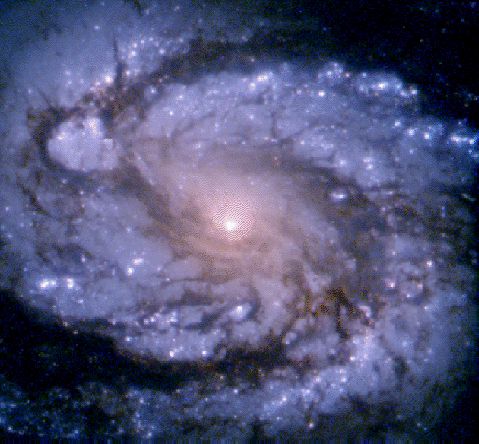 |
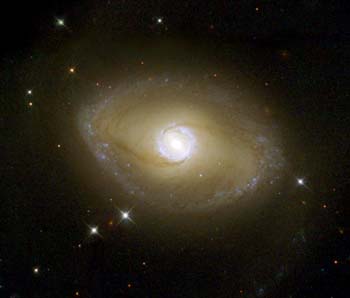 |
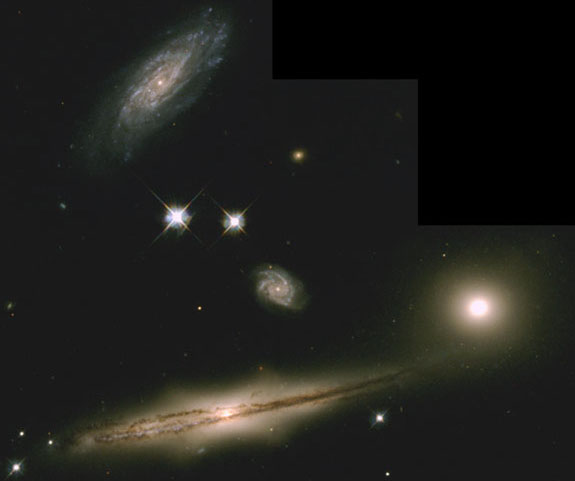 |
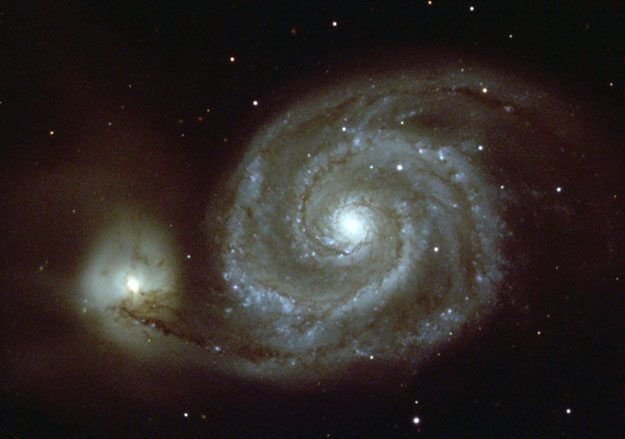 |
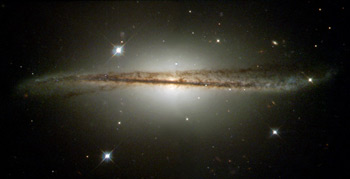 |
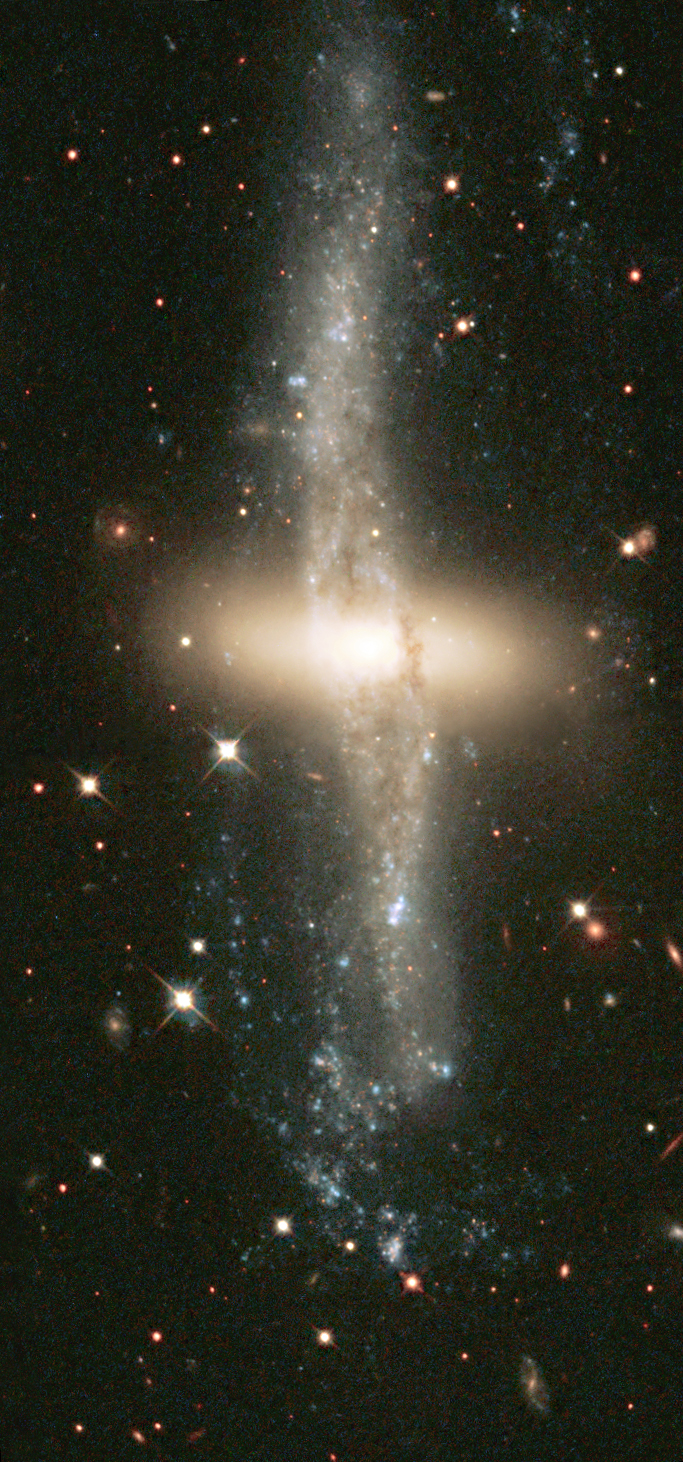 |
| HCG 87 (group) | M51 (Whirlpool) | ESO 510-G13 (warped) | NGC 4650A (polar ring) |
| A wide variety of spiral galaxies, from edge-on to face-on inclinations. [NASA/HST] | |||